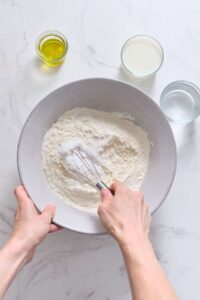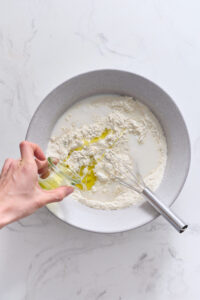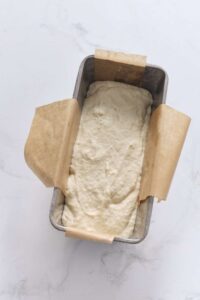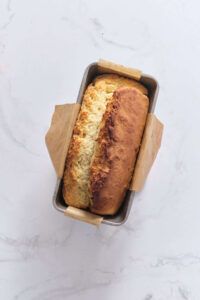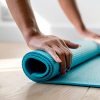Think Bread Without Yeast has to be flat and boring? Think again! This lovely loaf is thick, scrumptious, and complements all kinds of dishes.

This bread without yeast is basically a type of quick bread—such as banana or zucchini—which gives it a familiar, dense texture that can soak up a lot of seasonings. It’s savory enough to use for sandwiches or even garlic bread, but can also be sweetened up with a bit of jam or used for French toast. Whether you serve it salty or sweet, this bread without yeast is a tasty, easy way to enjoy the satisfaction of homemade bread.
Unlike yeasty bread—the dough of which can take a while to rise—bread without yeast is so simple that it can be made in less than an hour. For this reason, I prefer whipping this up instead of making traditional bread from scratch or buying ultra-processed loaves from the store. It’s affordable, easy, and palatable for the whole family.
Is Bread Without Yeast Healthy?
While this bread isn’t particularly nutritious, it can easily be adjusted to suit certain diets. If you’re concerned about sugar, you can replace it with an alternative like stevia or erythritol (although these sweeteners may alter the taste). Make the bread gluten-free with your favorite gluten-free all-purpose flour mix. Lastly, to create a vegan variation, use plant-based milk (like oat or cashew) instead of regular.

Tasty Variations For Special Occasions
Plain bread without yeast is wonderful as it is, but there are plenty of ways to enhance the appetizing taste. These methods are great for special events or when you want to experiment in the kitchen.
For an herb-infused loaf, I like to mix in a teaspoon each of rosemary, thyme, marjoram, and oregano. Take it a step further by adding two teaspoons of garlic powder and one teaspoon of onion powder to the dough for a more earthy flavor. Another way to maximize the flavor is to add some spice with chopped jalapeños and a quarter cup of cheddar cheese. Alternatively, you could make it more like a sweetbread with a quarter cup each of raisins and walnuts, which makes it a brilliant addition to your next brunch.

FAQs & Tips
This luscious loaf will last 3 to 4 days at room temperature in a ziplock bag or covered in plastic wrap. For longer storage, pop it in a freezer-safe container and freeze for up to 3 months. If you go this route, it’s a good idea to pre-slice the bread so you can easily snag a slice when you want toast in the morning. Otherwise, you can thaw pieces (or the whole loaf) in the fridge overnight before using for sandwiches, soups, or other meals.
Take a peek at the expiration date on your baking soda and make sure it’s still fresh. Usually, after opening, it has a shelf life of around six months to a year. Fresh baking soda is better because it ensures your dough has just the right amount of fluffiness to it.
At the end of baking time, check the loaf’s doneness by inserting a wooden skewer or knife into the center. If it comes out clean, remove the bread from the pan and let it cool on a wire rack to prevent sogginess.
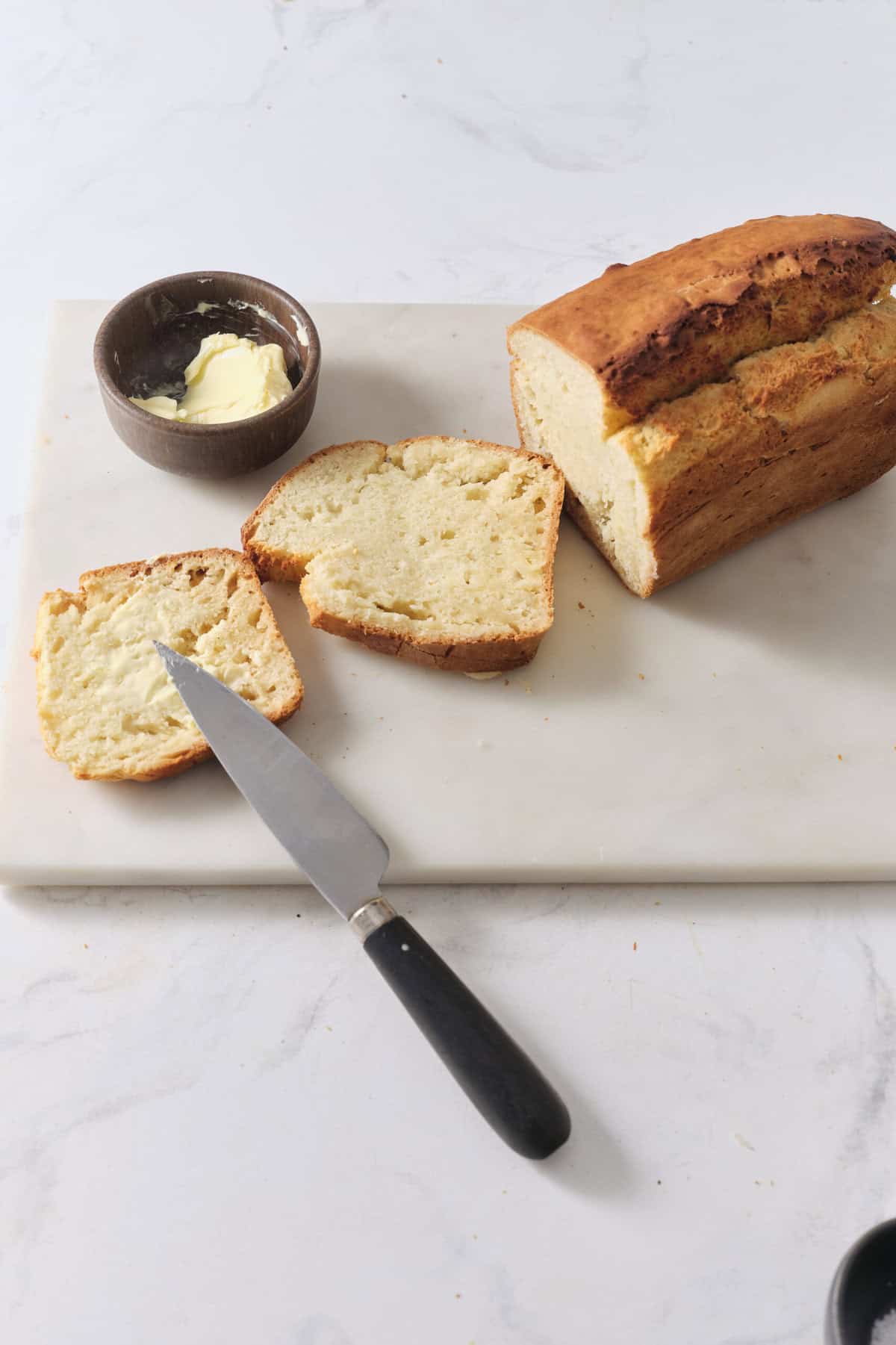
Serving Suggestions
Transform your golden brown bread without yeast into Garlic Toast, Cinnamon French Toast, an Avocado Egg Sandwich, or a Caprese Sandwich. Alternatively, you could simply slice and butter it up to serve alongside Irish Stew, Cauliflower-Leek Soup, or Chicken Cobb Salad.
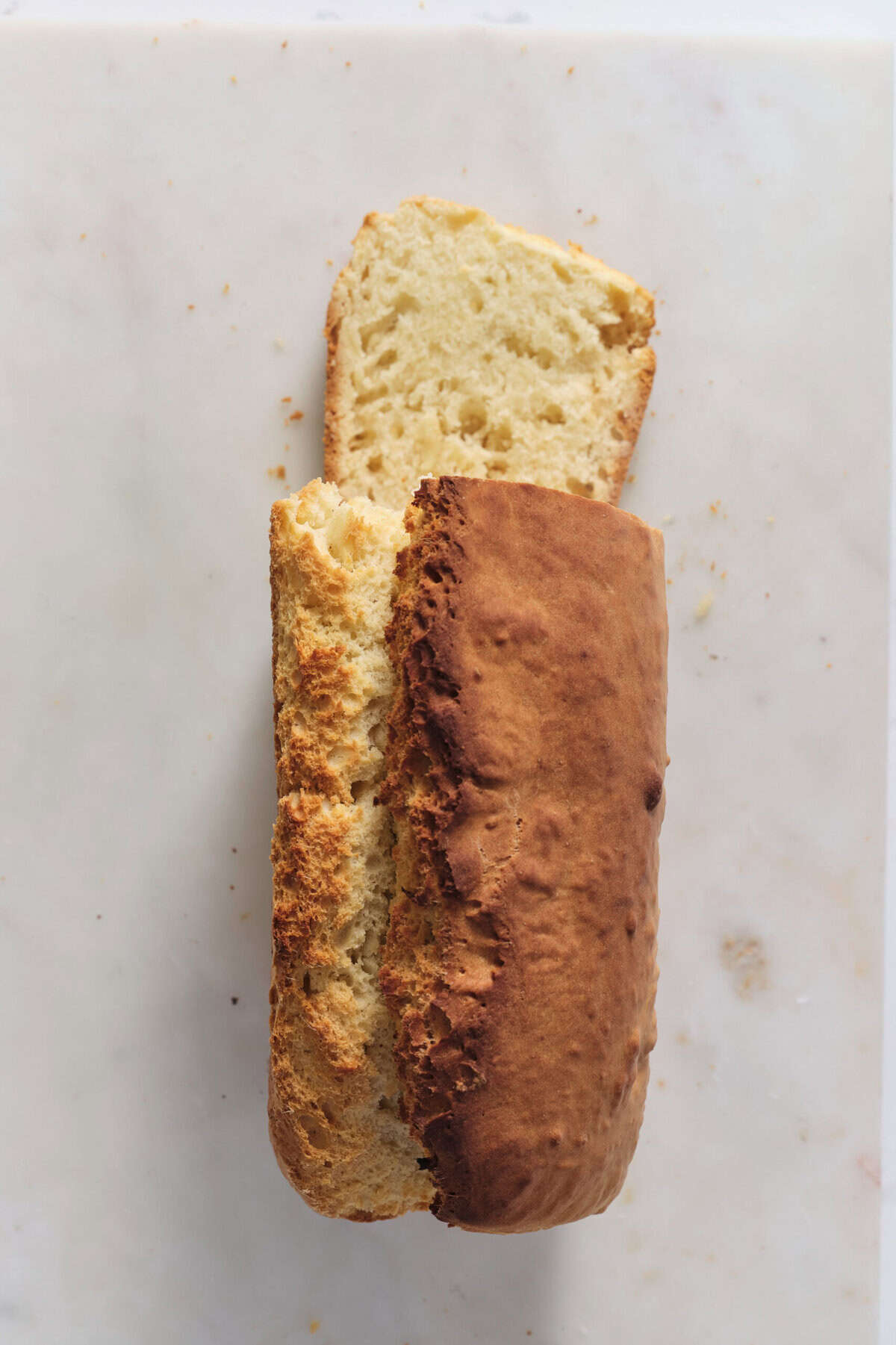
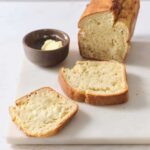
Bread Without Yeast
Ingredients
- 3 1/2 cups all-purpose flour
- 2 teaspoons baking soda
- 2 1/2 teaspoons granulated sugar
- 1 teaspoon salt
- 1 cup water
- 1 cup whole milk
- 1 1/2 tablespoons vegetable oil
Instructions
-
Preheat the oven to 400°F.
-
In a large mixing bowl, whisk together the flour, baking soda, sugar, and salt.

-
Add water, milk, and vegetable oil to the dry ingredients and mix until a wet dough forms.

-
Transfer the mixture to a greased loaf pan and smooth the top.

-
Bake in the preheated oven for 40 minutes or until the top is golden brown and a toothpick inserted into the center comes out clean.

Nutrition
The post Bread Without Yeast appeared first on Food Faith Fitness.

